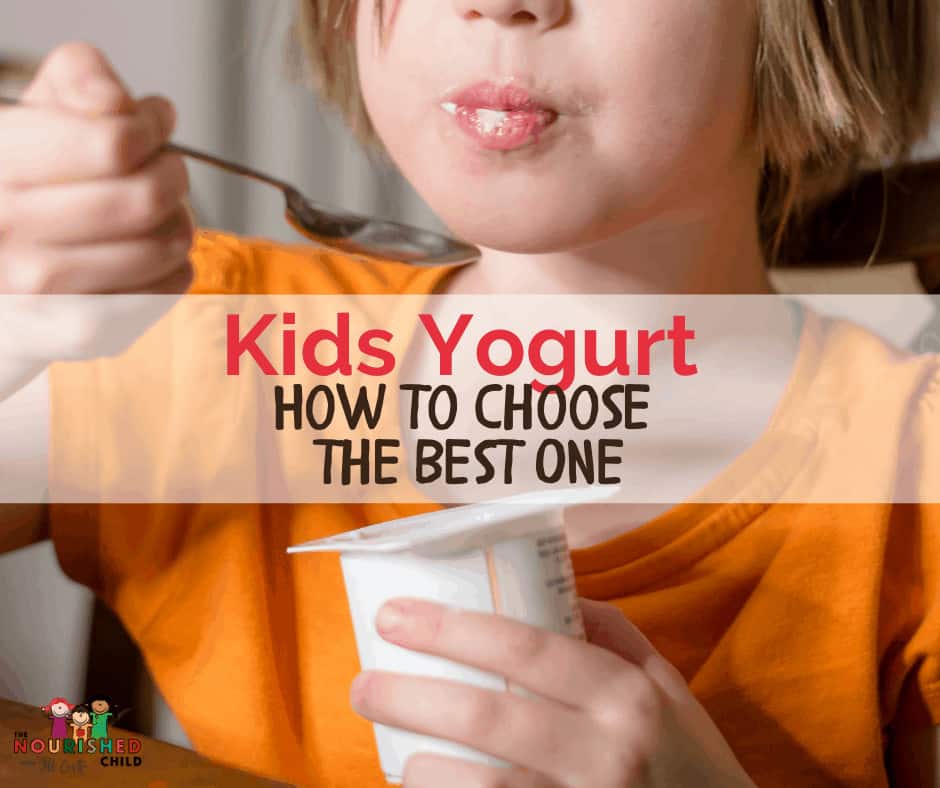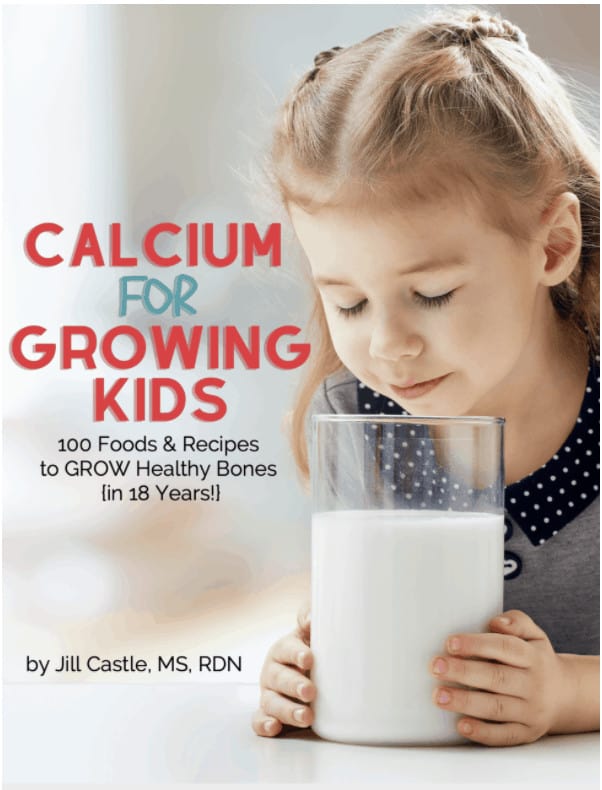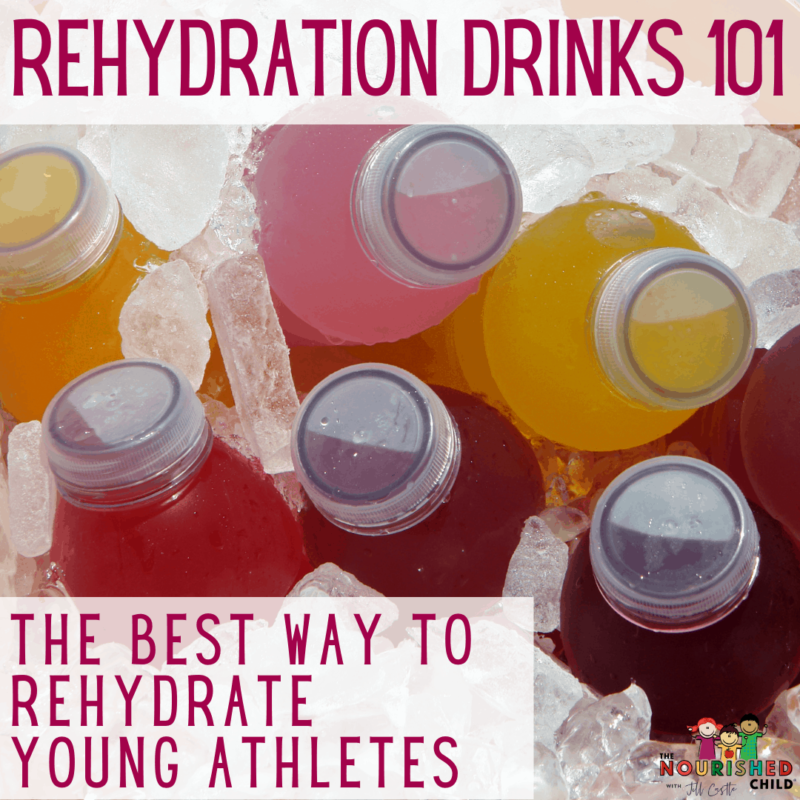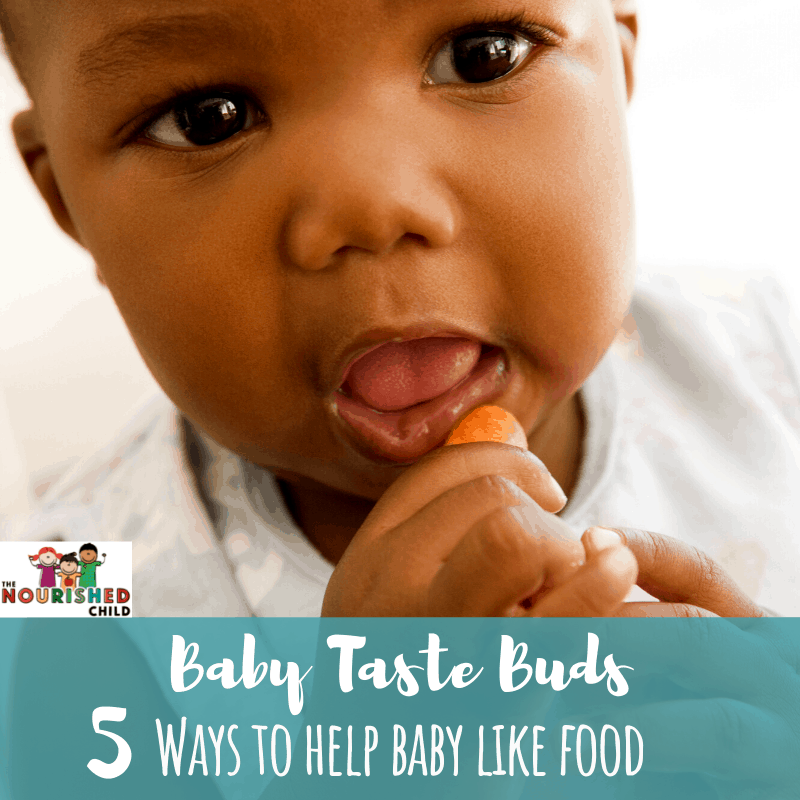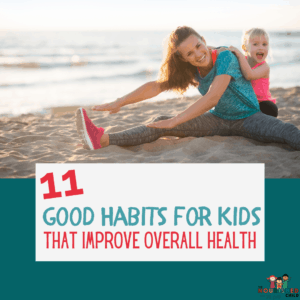35+ Calcium-Rich Foods for Kids (Best Sources of Calcium)
June 23, 2021
Calcium-rich foods for kids help ensure proper bone growth and development, plus a whole lot more.
We’ve all heard the slogans about calcium’s role in the body from child nutrition campaigns and dairy advertisements. As a pediatric nutritionist, I know parents understand how important enough calcium is to kids’ health.
Maybe you’re a little skeptical about the push to get kids to drink milk or eat more dairy products. Do kids actually have to drink milk to get calcium? Does calcium contribute to strong bones? Does it improve bone density?
Do kids really need that much calcium and wouldn’t they get enough from a balanced diet with lots of veggies rich in calcium? Let me say this loud and clear: I believe calcium-rich foods are required in a child’s diet.
Those little bones are growing and a good source of calcium is essential to this process.
In this article, you’ll learn why kids need calcium, the foods rich in calcium for kids, and how you can ensure your child gets good sources of calcium.
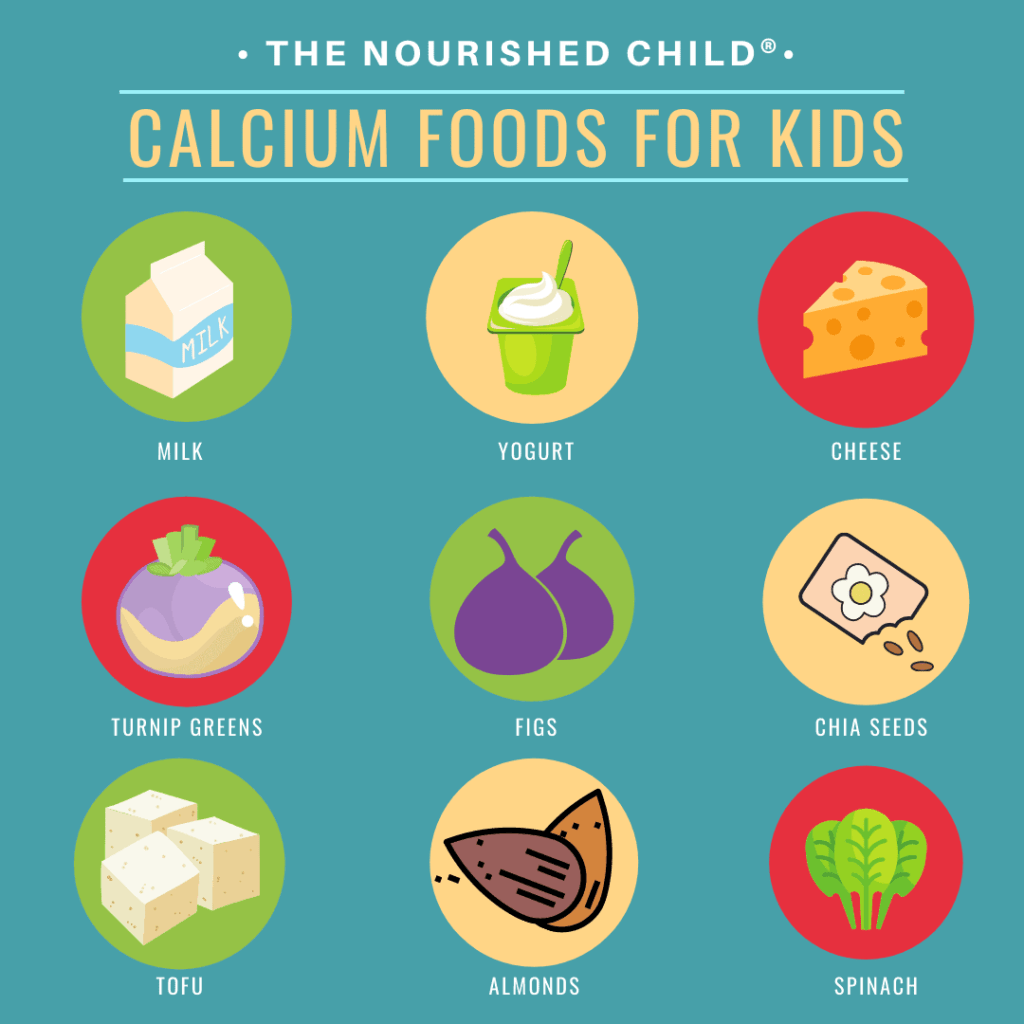
How Much Calcium Do Children Need?
The body stores calcium in the bones because too much in the bloodstream isn’t a good thing for the heart. When your child gets calcium from food, it’s deposited into the bones making them grow and get stronger.
So how much calcium do children need?
The Dietary Reference Intake (DRI) (or the recommended amount) for children according to the National Institutes of Health (NIH) is as follows:
Kids aged 4-8 years need 1,000 mg of calcium per day
Kids and teens aged 9-18 years need 1,300 milligrams per day
Why Foods High in Calcium Matter
Lack of dietary calcium is one of the leading nutrient deficiencies in children. Statistical data indicates boys aged 9-13 and girls from 9 to 18 years are at the highest risk for calcium inadequacies.
Even when we look at intake from both food and calcium supplements, teen girls in particular, still fall short.
Foods containing calcium often carry other essential nutrients like vitamin D, vitamin A, and protein, for instance. When you choose calcium-based foods for your family, you’re also helping everyone get closer to a nutrient-rich diet.
Dairy foods such as milk and yogurt are excellent sources but there’s a variety of other calcium-containing foods, too.
A teen vegetarian may get all of his calcium from non-animal sources, or a child with a milk allergy may get calcium from calcium-fortified non-dairy foods. Other families may prefer not to consume real milk, for many reasons, and choose calcium from a variety of foods, like seeds, soy products, or green leafy vegetables.
Do kids really need calcium foods like milk? It depends.
Look at your child’s medical circumstances, your family’s cultural practices, your child’s eating habits and food preferences (read: what they will eat), and other realities like your food budget when making nutrition decisions in your home. They all play out differently for every family.
Milk may be part of a healthy diet, but dairy milk isn’t for everyone. However, calcium is for every growing child.
Which Foods Have Calcium?
Milk is just one food that helps kids meet their calcium requirements. Not only does 1 cup of milk have 310 mg of calcium, but your child is also getting many other important bone nutrients, such as protein, vitamin D, and potassium.
In a study of children 2-18 years old, milk was the primary source of calcium, potassium, and vitamin D in their diet. But milk isn’t the only way to meet your child’s calcium needs.
The following calcium-rich foods list shows there’s a variety of foods to help your child or teen meet his daily requirements. What you choose to offer and how you combine them is up to you.
How Much Calcium is in Milk?
There are about 300 milligrams of calcium in a cup of cow’s milk. You’ll get around the same amount of calcium from a cup of low-fat yogurt, too.
How Much Calcium is in Spinach?
Cooked spinach contains about 200 milligrams of calcium in a cup; in a cup of raw spinach, there are about 50 milligrams.
High Calcium Foods Chart
| Food | Serving Size | Calcium Content |
| 1% Milk | 1 cup | 314 mg |
| 2% milk | 1 cup | 314 mg |
| Whole milk (3.25%) | 1 cup | 276 mg |
| Soy milk, all flavors, unsweetened | 1 cup | 301 mg |
| Chocolate soy milk | 1 cup | 306 mg |
| Almond milk, vanilla | 1 cup | 451 mg |
| Rice drink, fortified w/ calcium | 1 cup | 283 mg |
| Yogurt, plain, low fat | 1 cup | 311 mg |
| Mozzarella cheese, shredded | ½ cup
1 ounce | 306 mg
163 mg |
| Cheddar cheese, low fat, diced | ½ cup | 225 mg |
| American cheese, processed | 1 slice | 314 mg |
| Cottage cheese (2%) | ½ cup | 125 mg |
| Tofu (prepared with calcium sulfate) | ½ cup | 861 mg |
| Sardines, canned in oil | ½ cup | 285 mg |
| Soybeans | 1 cup | 515 mg |
| Almonds, roasted | ¼ cup | 115 mg |
| Sesame seeds | 1 ounce | 280 mg |
| Collard greens, cooked | 1 cup | 357 mg |
| Eggnog | 1 cup | 350 mg |
| Amaranth (grain), uncooked | 1 cup | 307 mg |
| Cream of Wheat, cooked | 1 cup | 306 mg |
| V8 juice, calcium enriched | 1 cup | 299 mg |
| Mung beans, raw | 1 cup | 273 mg |
| Spinach, canned | 1 cup | 272 mg |
| Ricotta, whole milk | ½ cup | 257 mg |
| Turnip greens, cooked | 1 cup | 249 mg |
| Spinach, cooked | 1 cup | 201 mg |
| Figs, dried | 1 cup | 241 mg |
| Bagel, enriched w/ calcium (plain, poppy seed, onion, sesame) | 1 bagel | 217 mg |
| Brazil nuts | 1 cup | 213 mg |
| Bread, white wheat | 1 slice | 192 mg |
| Tempeh | 1 cup | 184 mg |
| Chia seeds, dry | 1 ounce | 179 mg |
| Mustard greens, cooked | 1 cup | 165 mg |
| Beet greens, cooked | 1 cup | 164 mg |
| Kale, raw | 1 cup | 53 mg |
| **Values obtained from the USDA Nutrient Database |
Which Vegetables are High in Calcium?
It’s no surprise that people ask about other foods, especially veggies like broccoli and spinach which are a rich source of calcium. There’s no doubt there are some veggies that are some of the best calcium-rich foods.
Take a look at the following vegetables with the highest amounts of calcium per cup, according to the USDA Nutrient Database.
- A cup of oriental radishes (730 mg)
- A cup of soybeans (500 mg)
- A cup of cooked collards (357 mg)
- A cup of turnip greens (250 mg)
Did you notice broccoli and spinach didn’t even make the list?
Let’s look at these vegetables for a comparison.
- The calcium in 1 cup of raw, chopped broccoli is 43 mg.
- The calcium in 1 cup of raw spinach is 53 mg.
- The calcium in 1/4 cup of almonds is 115 mg.
Tip: Spinach needs to be cooked to be a notable source of calcium.
[Want to learn more about nutrition from vegetables? Read: 5 Types of Vegetables for Kids]
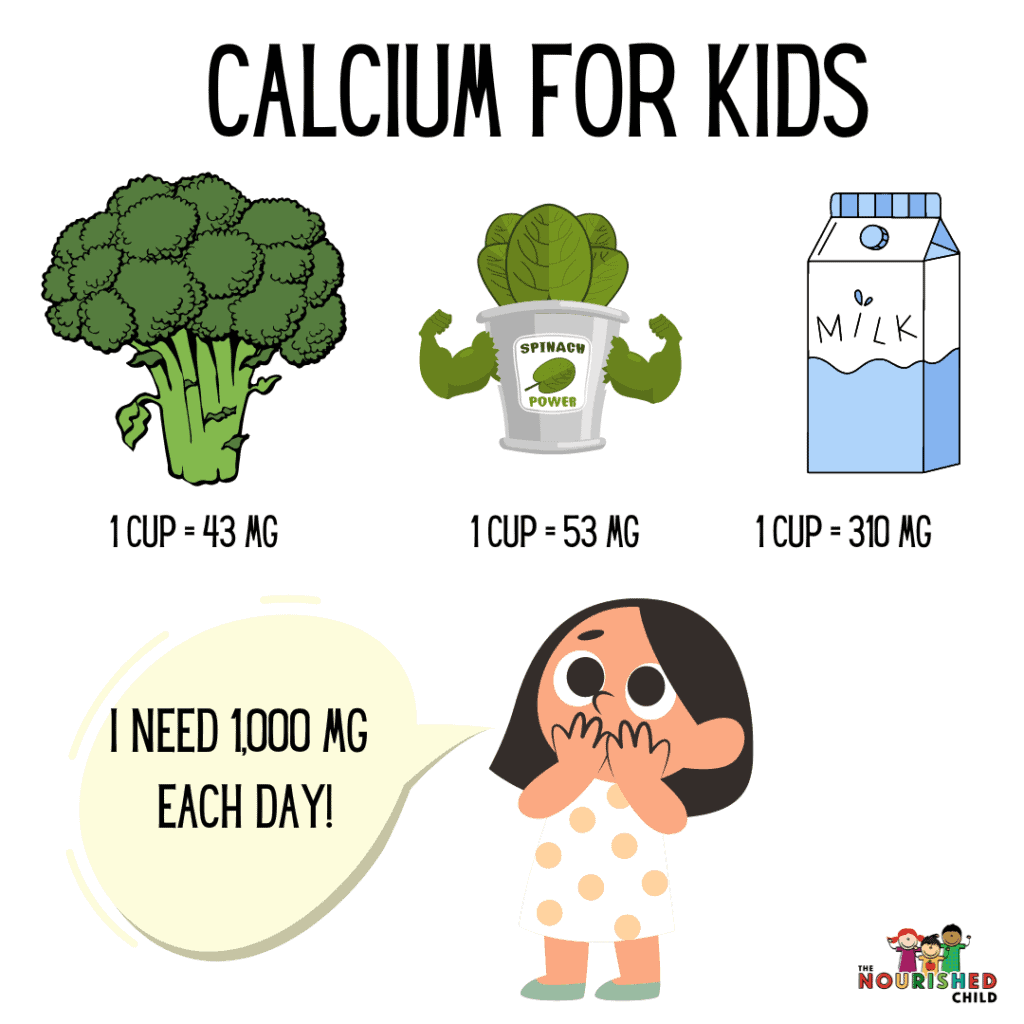
Can Your Child Meet His Calcium Needs From Vegetables?
First, let’s review calcium requirements again.
Young children need 1,000 mg/day. Older children and teens require 1,300 mg/day.
It takes 23 cups of broccoli to equal 1,000 mg calcium. That’s a lot of broccoli!
I’ve yet to meet a child who eats that much broccoli every day, and they’d probably get a tummy ache if they did. You can combine a variety of vegetables and other foods to match the total daily calcium requirements, but this takes forethought and planning.
Calcium Bioavailability
There’s another factor to consider when using vegetables as a source of calcium: bioavailability.
Bioavailability is the actual amount of calcium the body absorbs and uses from foods. Vegetables contain substances like oxalates and phytates, which interfere with calcium absorption and reduce the overall amount absorbed. That means your child will get less calcium from those vegetables than the amount of calcium they contain.
Need More Help with Calcium Rich Foods?
If you want more help with planning a variety of calcium foods and ensure your child is growing strong, healthy bones, I’ve got a great resource for you!
My Calcium for Growing Kids guidebook digs deeper into calcium and how to meet your child’s needs.
I take into account the eating habits of children and make practical suggestions on how to balance the overall diet to encourage plenty of calcium. And if you have a child who isn’t meeting his needs, I help you with advice about calcium supplements.

This post was updated from its original in August 2023.

